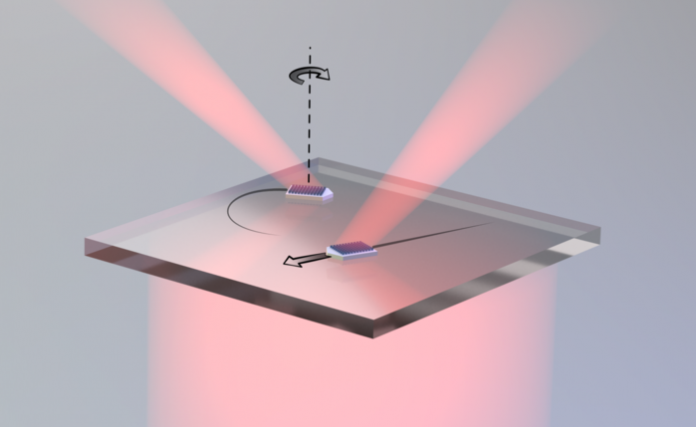Researchers at Chalmers University of Technology, Sweden, have invented microscopically tiny vehicles – which are powered 100% by light
The tiny vehicles move following paths of light, powered by nothing but the light itself.
Mikael Käll, Professor at the Department of Physics at Chalmers University of Technology, co-author of the article and leader of the research project, said: “According to Newton’s third law, for every action there is an equal and opposite reaction – this means that when the light hits the meta-surface, and is deflected in a new direction, the meta-surface is also pushed away in the other direction. Imagine playing pool, when two balls hit each other and bounce off in different directions.
“In this case, the photons and the meta surface are like those two pool balls.”

How do the tiny vehicles work?
The researchers manufactured vehicles at a scale of 10 micrometres wide and 1 micrometre thick – one thousandth of a millimetre. The vehicles consisted of a tiny particle, coated with something known as a ‘metasurface’.
Metasurfaces are ultra-thin arrangements of carefully designed and ordered nanoparticles, tailored to direct light in interesting and unusual ways. They offer possibilities for use in advanced components for optical applications such as cameras and microscopes.
The researchers took their microscopic vehicles, which they termed ‘metavehicles’, and placed them on the bottom of a water dish, then used a loosely focused laser to direct a plane wave of light onto them.
By a purely mechanical process – the heat generated by the light plays no part in the effect – the vehicles could then be moved in a variety of patterns.
What can they do in the future?
Right now, it is unclear. But they have opened a door.
Professor Käll further commented: “In the exploration of optical forces, there are many interesting effects that are not yet fully understood. It is not applications that drive this type of research, but exploration of the different possibilities. In a number of different stages ahead, you never know what will happen.
“But the fact that we showed how the metavehicles can be used as transporters is the most initially promising potential application, for example to move particles through cell solutions.”











